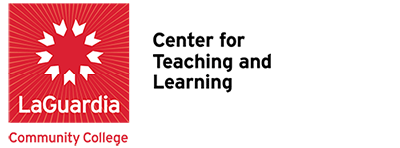Suggested Readings from CTL Seminars

Image adapted from Michael Chen, creative commons 2.0
First Year Seminar course materials
from Ingrid Veras, Natural Science
The theme of my NSF is climate change as it pertains to water or air pollution. The websites listed here are used to support the students’ research papers and oral presentations, and to demonstrate presentation of claims, evidence, reasoning, and the scientific method. Also included is the peer-reviewed article referred to by Veronica Martinez in our conversation; it is used to introduce research into the water quality of Newtown Creek.
Climate Impacts on Coastal Areas, Environmental Protection Agency, accessed May 12, 2021 https://19january2017snapshot.epa.gov/climate-impacts/climate-impacts-coastal-areas_.html [19january2017snapshot.epa.gov].
Climate impact on Ecosystems, Environmental Protection Agency, accessed May 12, 2021https://19january2017snapshot.epa.gov/climate-impacts/climate-impacts-ecosystems_.html [19january2017snapshot.epa.gov].
Global Change Special Report, US Global Change Research Program, accessed May 12, 2021,https://nca2014.globalchange.gov/report/sectors/ecosystems#graphic-16350 [nca2014.globalchange.gov].
Biological Responses to Climate Change, US Global Change Research Program, accessed May 12, 2021,https://nca2014.globalchange.gov/report/sectors/ecosystems#graphic-16350 [nca2014.globalchange.gov].
Climate Impacts on Human Health, Environmental Protection Agency, accessed May 12, 2021, https://19january2017snapshot.epa.gov/climate-impacts/climate-impacts-human-health_.html [19january2017snapshot.epa.gov].
Calderón, Olga., H. Porter-Morgan, Joby Jacob, and W. Elkins, 2017. “Bacterial Diversity Impacts as a Result of Combined Sewer Overflow in a Polluted Waterway.” Journal of Environmental Science andcManagement 3(4): 437-446. doi: 10.22034/gjesm.2017.03.04.009
Diversity, Equity, and Inclusion (DEI)
from Tuli Chatterji, DEI, English
- Geneva Gay’s Culturally Responsive Teaching: Theory, Research, and Practice (2018) highlights the significance of “caring” in her approach to culturally responsive teaching. In particular, I loved her words, “I have faith in your ability to learn, I care about the quality of your learning, and I commit myself to making sure that you will learn.” This belief encapsulates my feelings toward my students.
from Belkis Gonzalez, English
- In On Being Included: Racism and Diversity in Institutional Life (2012), Sara Ahmed, a scholar of gender/sexuality, critical race, and postcolonial theory, examines how institutions often resist and co-opt diversity initiatives even while symbolically supporting such work. For example, in the chapter “Commitment as a Non-Performative,” she addresses institutional speech acts that work to obscure the institution’s resistance to actual transformation. One of the wonderful things about Ahmed’s book is that it incorporates the voices and perspectives of diversity workers at a range of schools who describe how their struggles to build more inclusive institutions affect them emotionally and psychologically. Ahmed is also the author of Queer Phenomenology, which explores the idea of sexuality as “orienting/ disorienting.” On Being Included is at times a bit in that vein, especially in discussing the psychic toll of undertaking DEI work at institutions that “talk the talk” but do not “walk the walk.”
from Wendy Nicholson, Student Affairs and CTL DEI seminar co-facilitator
- Bettina Love’s We Want to do More Than Survive: Abolitionist Teaching and the Pursuit of Educational Freedom (2019) details how to achieve educational freedom (not just reform) in bold and intentional ways.
- In Racial Battle Fatigue in Higher Education: Exposing the Myth of Post-Racial America (2014), Kenneth J. Fasching-Varner defines the concept of racial battle fatigue and discusses its perpetuation in higher education from the perspectives of chief diversity officers, academics, and graduate students.
- In the anthology Racial Battle Fatigue in Faculty: Perspectives and Lessons from Higher Education (2020), editors Nicholas D. Hartlep and Daisy Ball document the experiences of faculty of color in the academy.
Language across the Curriculum
from Belkis Gonzalez, English
- Suresh Canagarajah’s Translingual Practice: Global Englishes and Cosmopolitan Relations (2013) is particularly relevant to teaching writing at LaGuardia. Her argument rejects a dichotomy between “monolingual” and “multilingual” as an ideological construct that obscures the ways diverse communities shape languages for shifting communicative goals. The book explores how communication always involves not code-switching but “codemeshing,” a practice of meshing languages embedded in multiple intersecting identities. It addresses the situational and affective dimensions of language, emphasizing communication as a practice that implies a shared space.
from Derek Stadler, Library
- In “Translanguaging as Socially Just Pedagogy,” (Education as Change, 2017) Ellen Hurst and Msakha Mona tackle social justice issues in South African institutions of higher education in which English is the teaching and learning language even though it is not the first language of a large section of students. I found that the topics discussed are relevant to concerns shared by faculty and students attending institutions of higher education within the United States, most particularly in urban areas.
- Roy Lyster’s “Translanguaging in Immersion: Cognitive Support or Social Prestige?” (Canadian Modern Language Review 2019) argues against increased use of English in Canadian and US immersion programs attended by students speaking minority languages such as French or Spanish, and supports the use of minority languages over English for classroom instruction.
New to College 2.0
from Ellen Quish, CTL
- The case study “Advising in the First Year Seminar for Business” by Andrea Francis and Ellen Quish (Advising Success Network 2021) outlines LaGuardia’s approach to advising in the First Year Seminar for Business and discusses important components relevant to advisement, inclusion, and access, as well as relationships, technology, and agency.
The Showcase ePortfolio
from Pablo Avila (CTL), Michele de Goeas-malone (ELA), and Dominique Zino, (English)
- “Social Pedagogies in ePortfolio Practices: Principles for Design and Impact” by Randall Bass (2012) An oldie but a goodie, this piece reminds Michele De Goeas-malone of where her initial interest in ePortfolio pedagogy started. It’s a quick read and includes a helpful definition of “social pedagogies” and their expected learning outcomes. Social pedagogy not only informs the work we do with ePortfolios, it represents the broader approach to teaching and learning that ePortfolios support and extend.
- “Curating the Complete Self” by Demetrios Kapetanakos in Catalyst in Action: Case Studies of High-Impact ePortfolio Practice, (Bret Eynon and Laura Gambino, editors, 2018). It’s always a treat to read a paper and then invite the author to a seminar Q&A. Here Demetrios defines curation as “the practice of selecting a set of artifacts or experiences, weaving them together to tell a story, and then sharing that story with others. His chapter models how to engage FYS students in a deeper, “high-impact” ePortfolio practice and exemplifies the kind of social pedagogy described by Randy Bass in “Social Pedagogies in ePortfolio Practices” (see above).
- “The Value of Career ePortfolios on Job Applicant Performance: Using Data to Determine Effectiveness” by Gail Ring, Chelsea Waugaman, and Bob Brackett (2017) focuses on health science and engineering students enrolled in capstone seminars at Clemson University. The authors found that engaging students in a “purposeful and iterative dialogue” centered on what they had collected in their ePortfolios had a positive impact on the students’ job interviewing skills and their ability to communicate their accomplishments to an employer.



